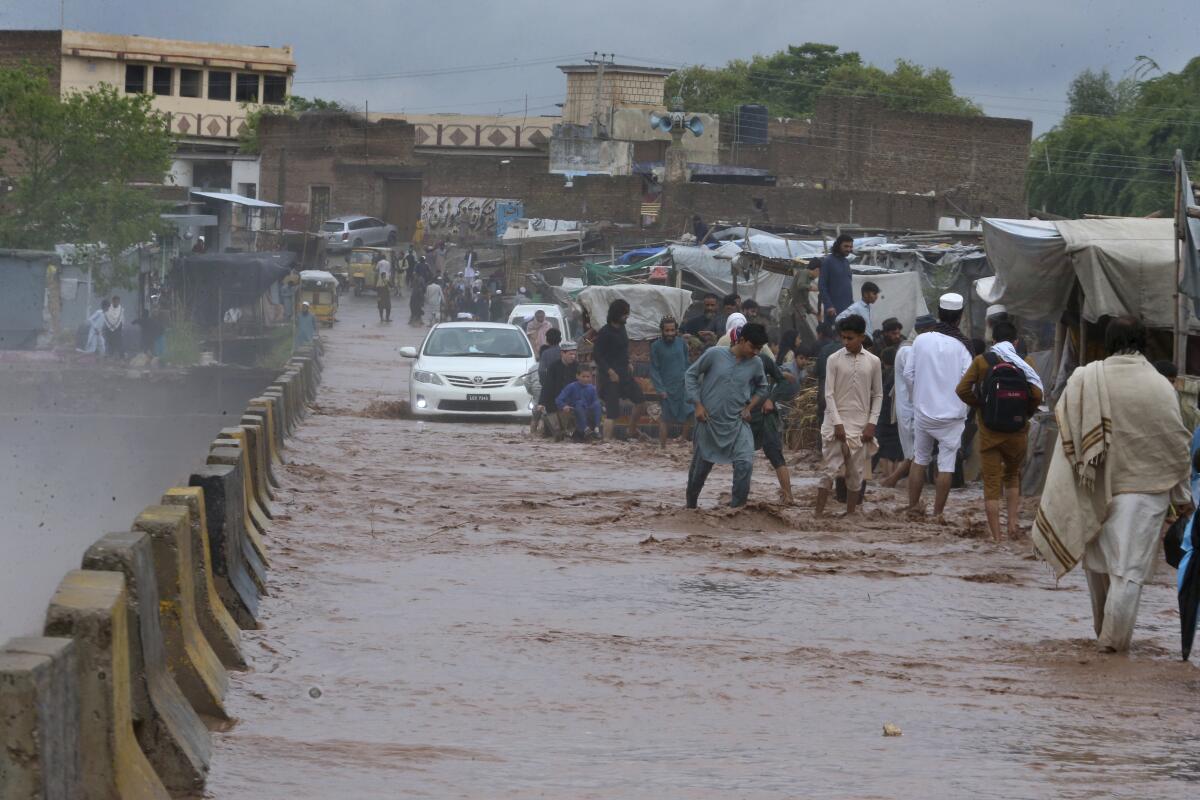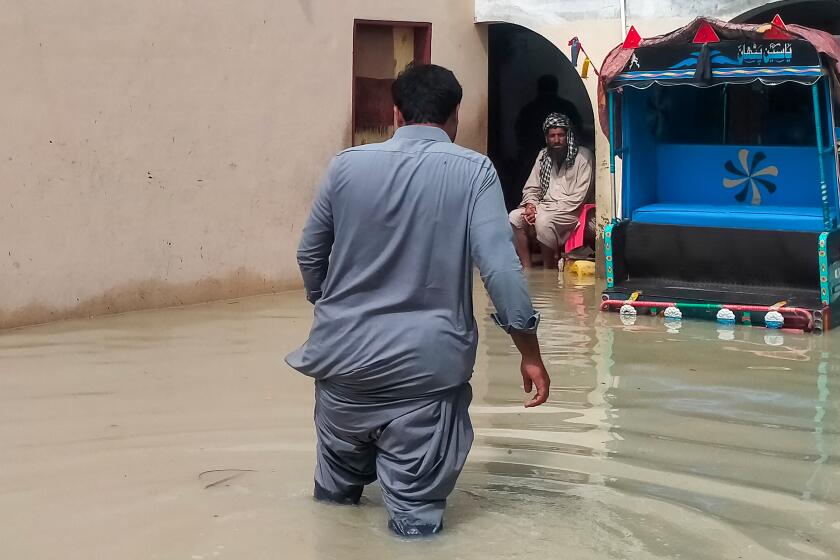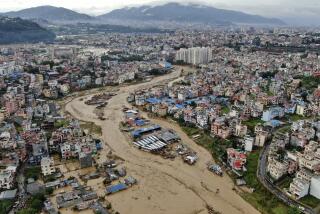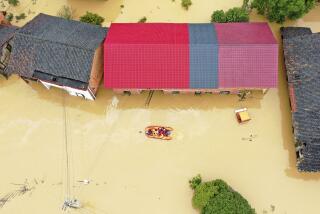At least 63 killed following four days of rainstorms in Pakistan

PESHAWAR, Pakistan — Lightning and heavy rains have led to 14 more deaths in Pakistan, officials said Wednesday, bringing the death toll from four days of extreme weather to at least 63, as the heaviest downpour in decades flooded villages on the country’s southwestern coast. Flash floods have also killed dozens of people in neighboring Afghanistan.
In Pakistan, most of the deaths were reported from Khyber Pakhtunkhwa province, in the country’s northwest. Collapsing buildings have killed 32 people, including 15 children and five women, said Khursheed Anwar, a spokesman for the Disaster Management Authority. Dozens more were also injured in the region, where 1,370 houses were damaged, Anwar said.
The eastern province of Punjab has reported 21 lighting- and collapse-related deaths, while Baluchistan, in the country’s southwest, reported 10 dead as authorities declared a state of emergency following flash floods.
On Wednesday, Baluchistan was bracing for more rains amid ongoing rescue and relief operations, as flash floods inundated villages near the coastal city of Gwadar.
Heavy rains also came down on the disputed Himalayan region of Kashmir. Authorities said a new spell of heavy rain is set to hit many areas, including the capital Karachi.
Pakistan is seeing heavier rain in April due to climate change, said Zaheer Ahmed Babar, a senior official at the Pakistan Meteorological Department.
At least 29 have died due to heavy rains across Pakistan, which have caused houses to collapse and landslides to block roads, authorities say.
“This month, so far there has been 353% more rainfall than normal in Baluchistan,” Babar told the Associated Press. “Overall, rainfall has been 99% higher than the average across Pakistan, and it shows climate change has already happened in our country.”
Babar said Khyber Pakhtunkhwa province witnessed 90% more rain than usual in April, although rainfall in other parts of the country has remained relatively normal. It has been the wettest April in the past 30 years.
In 2022, downpours swelled rivers and at one point flooded a third of Pakistan, killing 1,739 people. The floods also caused $30 billion in damage, from which Pakistan is still trying to rebuild. Baluchistan saw rainfall at 590% above average that year, while Karachi saw 726% more rainfall than usual.
Meanwhile, the death toll in neighboring Afghanistan rose to 70 after 37 more people died from various rain and flash flooding incidents in recent days, according to Abdullah Janan Saiq, the Taliban’s spokesperson for the State Ministry for Natural Disaster Management.
Flash floods have also damaged 2,000 homes, three mosques, four schools and affected thousands of people who will need humanitarian assistance, he said. Floods also damaged agriculture land and 2,500 animals died from the deluges, Saiq said.
Khan writes for the Associated Press. AP writers Rahim Faiez in Islamabad and Abdul Sattar in Quetta, Pakistan contributed to this report.
More to Read
Sign up for Essential California
The most important California stories and recommendations in your inbox every morning.
You may occasionally receive promotional content from the Los Angeles Times.











